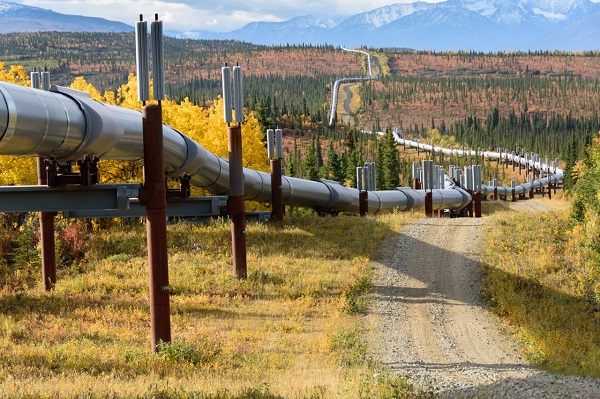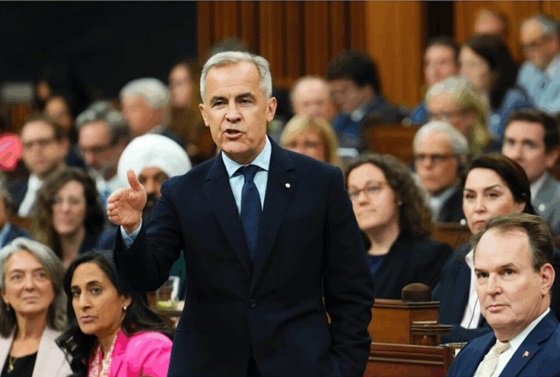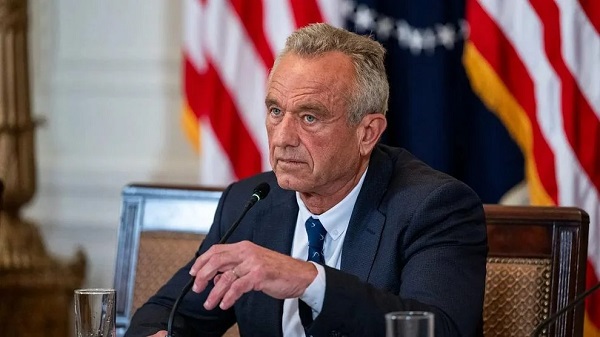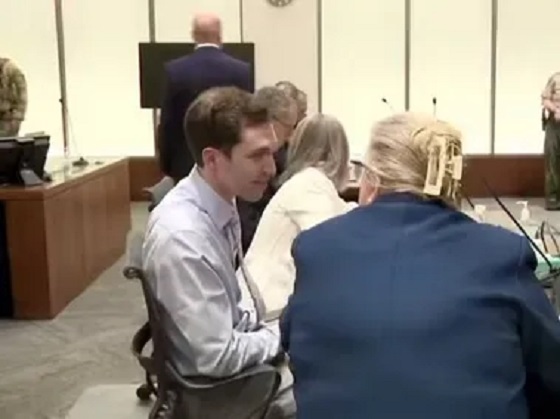Energy
First Nations Buy Into Pipelines

From the Frontier Centre for Public Policy
“Meaningful Indigenous participation in our resource economy is maturing. At first, First Nations used to ask for compensation, the jobs, and then for the contracts that created those jobs, Now they seek purchase equity in the project itself. Soon they will create the project and seek others to invest in it. Then they will have real economic power.”
It’s taken years to get here, but there’s a new trend in Canada’s pipeline industry, and it couldn’t come soon enough. That’s because the path we’ve been on until now has been one to ruin.
On July 30, TC Energy announced it was in the process of selling 5.34 per cent of its Nova Gas Transmission Ltd. (NGTL) System and the Foothills Pipeline assets for a gross purchase price of $1 billion. “The Agreement is backed by the Alberta Indigenous Opportunities Corporation (AIOC) and was negotiated by a consortium committee (Consortium) representing specific Indigenous Communities (Communities) across Alberta, British Columbia and Saskatchewan. This results in an implied enterprise value of approximately $1.65 billion, inclusive of the proportionate share of the Partnership Assets’ collective debt,” TC Energy said.
This comes a few months after its March 14 announcement to sell “all outstanding shares in Prince Rupert Gas Transmission Holdings Ltd. and the limited partnership interests in Prince Rupert Gas Transmission Limited Partnership (collectively, PRGT). PRGT is a wholly owned subsidiary of TC Energy and the developer of a natural gas pipeline project in British Columbia and potential delivery corridor that would further unlock Canada as a secure, affordable and sustainable source of LNG.”
The Nova system sale is significant. It’s the principal natural gas gathering system throughout Alberta and a bit into B.C. In addition to supplying Alberta with its gas needs, Nova, in turn, feeds the TC Energy Mainline. It also supplies Saskatchewan via Many Islands Pipe Lines and TransGas, both subsidiaries of SaskEnergy. And since Saskatchewan’s domestic gas production keeps falling, we now rely heavily on Alberta gas to keep our furnaces lit and our new gas fired power plants turning, keeping the lights on. When you look at the Nova map, it’s basically the map of Alberta.
Some of the most significant difficulties in getting major pipeline projects built in this country over the last 16 years has been Indigenous opposition. One of the first stories I wrote about with Pipeline News during the summer of 2008 was a First Nations protest on the Enbridge right of way at Kerrobert, complete with a teepee. That was for the Alberta Clipper project, but it was relatively quickly resolved.
Then there was Enbridge’s Northern Gateway project, which was approved by the Conservative federal government but halted by the courts because of insufficient Indigenous consultation. It was ultimately killed very early into the Trudeau-led Liberal administration, when he said, “The Great Bear Rainforest was no place for a pipeline, a crude pipeline.”
Northern Gateway would have terminated at Kitimat. Yet, curiously enough, that same forest had to be crossed to built the TC Energy Coastal GasLink project. It went grossly overbudget in no small part due to delays and resistance in every manner possible from the Wet’suweten in northern B.C. As Canadian Press reported on Dec. 11, 2023, “By the time the pipeline was finished, its estimated construction cost had ballooned from $6.6 billion to $14.5 billion.”
And then there was Trans Mountain Expansion. It had opposition from the BC government, City of Burnaby, and everyone who could apply a Sharpie marker to a Bristol board. But Indigenous opposition was a major factor. As Pipeline Online reported via the Canadian Press, “The project’s $34-billion price tag has ballooned from a 2017 estimate of $7.4 billion, with Trans Mountain Corp. blaming the increase on “extraordinary” factors including evolving compliance requirements, Indigenous accommodations, stakeholder engagement, extreme weather and the COVID-19 pandemic.”
By this spring, the number was $34 billion, and I anticipate its final cost will be higher still.
Maturing
There’s been a big change in recent years, not just in pipelines, but in other energy industries like wind and solar. That change had gone from consultation to jobs to equity investment.
The word used almost always is “reconciliation.” That can be a loaded word in many ways, Some feel it will heal wounds, and right past wrongs, or at least try to. Others would say it’s a form of extortion. And some take issue with racial overtones. But here’s something I heard this week that makes a lot of sense:
“Meaningful Indigenous participation in our resource economy is maturing. At first, First Nations used to ask for compensation, the jobs, and then for the contracts that created those jobs, Now they seek purchase equity in the project itself. Soon they will create the project and seek others to invest in it. Then they will have real economic power.”
That’s what Steve Halabura, professional geologist, told me. And he would know, since he’s been working with First Nations on this economic development front.
And you see that in the timeline I laid out. The 2008 protests were very much about compensation and jobs. Trans Mountain Expansion saw significant First Nations’ owned and operated firms awarded contracts. And now, they’re buying equity positions.
You know what? If First Nations bands, and people, do indeed become owners in these resource companies and infrastructure, if it helps pay for housing and water treatment plants, if it means meaningful work and paycheques, are they likely to fight the next project tooth and nail? Or will they want to be a part of it?
And think of it this way – if we could have gotten to this point ten years ago, maybe these projects might have gone much more smoothly. Maybe their final costs wouldn’t have been double, or quadruple, the original budget. When you think of it in that perspective – if a billion dollar equity stake meant Coastal GasLink could have cost $5 billion less, would it have been worth it to bring First Nations in as equity partners?
Some will say that’s extortion. Others would say it’s justice, or reconciliation. But maybe, just maybe, this is how we move forward, and everyone in the end wins. And maybe then Canada can, once again, build great things.
Brian Zinchuk is editor and owner of Pipeline Online and occasional contributor to the Frontier Centre for Public Policy. He can be reached at [email protected].
Business
Geopolitics no longer drives oil prices the way it used to

This article supplied by Troy Media.
Oil markets are shrugging off war and sanctions, a sign that oversupply now matters more than disruption
Oil producers hoping geopolitics would lift prices are running into a harsh reality. Markets are brushing off wars and sanctions as traders focus instead on expectations of a deep and persistent oil glut.
That shift was evident last week. Despite several geopolitical developments that would once have pushed prices higher, including the U.S. seizure of a Venezuelan crude tanker and fresh Ukrainian strikes on Russian energy infrastructure, oil markets barely reacted, with prices ending the week lower.
Brent crude settled Friday at US$61.12 a barrel and U.S. West Texas Intermediate at US$57.44, capping a weekly drop of more than four per cent.
Instead of responding to disruption headlines, markets were reacting to a different risk. Bearish sentiment, rather than geopolitics, continued to dominate as expectations of a “2026 glut” took centre stage.
At the heart of that outlook is a growing supply overhang. The oil market is grappling with whether sanctioned Russian and Iranian cargoes should still be counted as supply. That uncertainty helps explain why prices have been slow to react to a glut that is already forming on the water, said Carol Ryan, writing for The Wall Street Journal.
The scale of that buildup is significant. There are 1.4 billion barrels of oil “on the water,” 24 per cent higher than the average for this time of year between 2016 and 2024, according to oil analytics firm Vortexa. These figures capture shipments still in transit or cargoes that have yet to find a buyer, a clear sign that supply is running ahead of immediate demand.
Official forecasts have reinforced that view. Last week, the International Energy Agency trimmed its projected 2026 surplus to 3.84 million barrels per day, down from 4.09 million barrels per day projected previously. Even so, the IEA still sees a large oversupply relative to global demand.
Demand growth offers little relief. The IEA expects growth of 830 kb/d (thousand barrels per day) in 2025 and 860 kb/d in 2026, with petrochemical feedstocks accounting for a larger share of incremental demand. That pace remains modest against the volume of supply coming to market.
OPEC, however, has offered a different assessment. In its latest report, the group pointed to a near balance, forecasting demand for OPEC+ crude averaging about 43 million barrels per day in 2026, roughly in line with what it produced in November.
Reflecting that confidence. OPEC+ kept policy steady late in November, pausing planned output hikes for the first quarter of 2026 while more than three million barrels per day of cuts remain in place. Those measures are supportive in theory, but markets have shown little sign of being persuaded.
Recent geopolitical events underline that scepticism. The ongoing Russia-Ukraine war and Ukrainian strikes on Russian energy infrastructure, including reported hits on facilities such as the Slavneft-YANOS refinery in Yaroslavl, again failed to lift prices. Russia-Ukraine headlines pulled prices down more than strikes lifted them, according to media reports, suggesting traders were more attuned to “peace deal” risk than to supply disruption.
Washington’s move against Venezuelan crude shipments offered another test. The U.S. seizure of a Venezuelan tanker, the first formal seizure under the 2019 sanctions framework, had a muted price impact, writes Marcin Frackiewicz of Oilprice.com.
Venezuela’s exports fell sharply in the days that followed, but markets remained largely unmoved. One explanation is that Venezuela’s output is no longer large enough to tighten global balances the way it once did, and that abundant global supply has reduced the geopolitical premium.
Taken together, the signal is hard to miss. Oil producers, including in Canada, face a reality check in a market that no longer rewards headlines, only discipline and demand.
Toronto-based Rashid Husain Syed is a highly regarded analyst specializing in energy and politics, particularly in the Middle East. In addition to his contributions to local and international newspapers, Rashid frequently lends his expertise as a speaker at global conferences. Organizations such as the Department of Energy in Washington and the International Energy Agency in Paris have sought his insights on global energy matters.
Troy Media empowers Canadian community news outlets by providing independent, insightful analysis and commentary. Our mission is to support local media in helping Canadians stay informed and engaged by delivering reliable content that strengthens community connections and deepens understanding across the country.
Energy
Liberals Twisted Themselves Into Pretzels Over Their Own Pipeline MOU

From Energy Now
By Margareta Dovgal
Playing politics with pipelines is a time-honored Canadian tradition. Recent events in the House of Commons offered a delightful twist on the genre.
The Conservatives introduced a motion quoting the Liberals’ own pipeline promises laid out in the Memorandum of Understanding (MOU) with Alberta, nearly verbatim. The Liberals, true to form, killed it 196–139 with enthusiastic help from the NDP, Bloc, and Greens.
We all knew how this would end. Opposition motions like this never pass; no government, especially not one led by Mark Carney, is going to let the opposition dictate the agenda. There’s not much use feigning outrage that the Liberals voted it down. The more entertaining angle has been watching closely as Liberal MPs twist themselves into pretzels explaining why they had to vote “no” on a motion that cheers on a project they claim to support in principle.
Liberal MP Corey Hogan dismissed the motion as “game-playing” designed to “poke at people”.
And he’s absolutely right to call it a “trap” for the Liberals. But traps only work when you walk into them.
Indigenous Services Minister Mandy Gull-Masty deemed the motion an “immature waste of parliamentary time” and “clearly an insult towards Indigenous Peoples” because it didn’t include every clause of the original agreement. Energy Minister Tim Hodgson decried it as a “cynical ploy to divide us” that “cherry-picked” the MOU.
Yet the prize for the most tortured metaphor goes to the prime minister himself. Defending his vote against his own pipeline promise, Carney lectured the House that “you have to eat the entire meal, not just the appetizer.”
It’s a clever line, and it also reveals the problem. The “meal” Carney is serving is stuffed with conditions. Environmental targets or meaningful engagement with Indigenous communities aren’t unrealistic asks. A crippling industrial carbon price as a precondition might be though.
But the prime minister has already said the quiet part out loud.
Speaking in the House a few weeks ago, Carney admitted that the agreement creates “necessary conditions, but not sufficient conditions,” before explicitly stating: “We believe the government of British Columbia has to agree.”
There is the poison pill. Handing a de facto veto to a provincial government that has spent years fighting oil infrastructure is neither constitutionally required nor politically likely. Elevating B.C.’s “agreement” to a condition, which is something the MOU text itself carefully avoids doing, means that Carney has made his own “meal” effectively inedible.
Hodgson’s repeated emphasis that the Liberal caucus supports “the entire MOU, the entire MOU” only reinforces this theory.
This entire episode forces us to ask whether the MOU is a real plan to build a pipeline, or just a national unity play designed to cool down the separatist temperature in Alberta. My sense is that Ottawa knew they had to throw a bone to Premier Danielle Smith because the threat of the sovereignty movement is gaining real traction. But you can’t just create the pretense of negotiation to buy time.
With the MOU getting Smith boo’ed at her own party’s convention by the separatists, it’s debatable whether that bone was even an effective one to throw.
There is a way. The federal government has the jurisdiction. If they really wanted to, they could just do it, provided the duty to consult with and accommodate Indigenous peoples was satisfied. Keep in mind: no reasonable interpretation equates Section 35 of the Charter to a veto.
Instead, the MOU is baked with so many conditions that the Liberals have effectively laid the groundwork for how they’re going to fail.
With overly-hedged, rather cryptic messaging, Liberals have themselves given considerable weight to a cynical theory, that the MOU is a stalling tactic, not a foundation to get more Canadian oil to the markets it’s needed in. Maybe Hodgson is telling the truth, and caucus is unified because the radicals are satisfied that “the entire MOU” ensures that a new oil pipeline will never reach tidewater through BC.
So, hats off to the legislative affairs strategists in the Conservative caucus. The real test of Carney’s political power continues: can he force a caucus that prefers fantasy economics into a mold of economic literacy to deliver on the vision Canadians signed off on? Or will he be hamstrung trying to appease the radicals from within?
Margareta Dovgal is managing director of Resource Works Society.
-

 Crime1 day ago
Crime1 day agoBrown University shooter dead of apparent self-inflicted gunshot wound
-

 Business2 days ago
Business2 days agoCanada Hits the Brakes on Population
-

 Frontier Centre for Public Policy2 days ago
Frontier Centre for Public Policy2 days agoCanada Lets Child-Porn Offenders Off Easy While Targeting Bible Believers
-

 Health17 hours ago
Health17 hours agoRFK Jr reversing Biden-era policies on gender transition care for minors
-

 Agriculture2 days ago
Agriculture2 days agoWhy is Canada paying for dairy ‘losses’ during a boom?
-

 Alberta18 hours ago
Alberta18 hours agoAlberta’s new diagnostic policy appears to meet standard for Canada Health Act compliance
-

 Business2 days ago
Business2 days agoWhite House declares inflation era OVER after shock report
-

 Business1 day ago
Business1 day agoTrump signs order reclassifying marijuana as Schedule III drug










